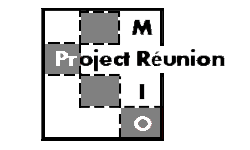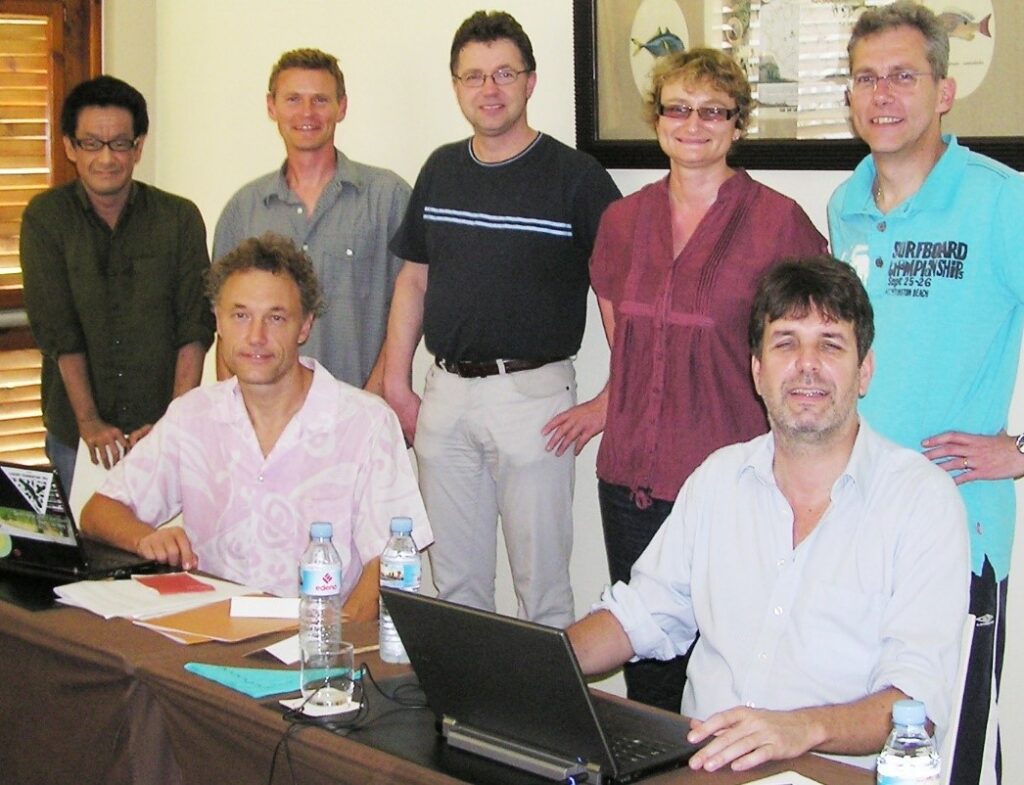
Project Réunion was a collaboration between the top global institutions involved in the compilation of global extended Multi-Region Input-Output (MRIO) databases, with participants from TNO Delft/CML Leiden, the University of Groningen, the OECD, Purdue University, the Institute of Developing Economies of the Japan External Trade Organisation (IDE-JETRO), the Center for International Climate and Environmental Research in Oslo, and the University of Sydney. The goal of Project Réunion was to coordinate worldwide activities on environmentally-extended MRIO database compilation.
The idea for this collaboration originated from a meeting of MRIO leaders at the 18th Input-Output Conference held in 2010 at the University of Sydney. This meeting clearly demonstrated the great opportunities of a world MRIO network for shaping environmental databases, sustainability research and environmental policy around the world. The University of Sydney under its IPDF scheme, as well as IDE-JETRO, provided seed funds in order to enable these leaders in the field to meet three times, and to implement a global collaboration.
The first Project Réunion meeting was held in L’Hermitage-les-Bains, Réunion Island, 27-29 March 2011. Following this meeting, IDE-JETRO made available funds for a third meeting, which was scheduled ahead of the second Réunion meeting, held in Tokyo, Japan, during 30 January – 2 February 2012.
As a first concrete step, Project Réunion members agreed, during their third 2013 meeting in Kurokawa Onsen, Kyushu, Japan, to aim at demonstrating the ability to generate, based on unified data pools and construction pipelines, a set of global MRIO databases expressed in the regional and sectoral classifications of some of the prominent MRIO tables existing at the time. In 2013, Project Réunion received funding from the Australian Research Council under its Discovery Project DP130101293, in order to undertake a three-year research project entitled “Unifying global approaches to multi-regional input-output analysis and environmental footprinting”.
The participants of Project Réunion were (in alphabetical order)
- Prof Erik Dietzenbacher for the WIOD project at the University of Groningen, Netherlands;
- Prof Satoshi Inomata for the Asian IO project at IDE/JETRO, Japan;
- Prof Manfred Lenzen, for the AISHA project at ISA, Sydney University, Australia;
- Prof Bart Los for the WIOD project at the University of Groningen, Netherlands;
- Dr Bo Meng for the Asian IO project at IDE/JETRO, Japan;
- Dr Glen Peters for CICERO, Norway;
- Prof Arnold Tukker for the EXIOPOL project at TNO, Netherlands;
- Prof Terrie Walmsley for the GTAP project at Purdue University, USA;
- Prof Tommy Wiedmann for the University of New South Wales, Australia;
- Dr Norihiko Yamano for the OECD, Paris;

The founding members of the Réunion Project. From left to right: Satoshi Inomata, Manfred Lenzen, Tommy Wiedmann, Bart Los, Terrie Walmsley, Arnold Tukker, and Erik Dietzenbacher.
Project Réunion was officially closed on 31 March 2017, with the publication of the Special Issue on Virtual Laboratories for collaborative input-output analysis, published in Economic Systems Research as Vol. 29, Issue 2.
In order to demonstrate the capability of the Virtual Laboratory technology to create time series of MRIO tables in flexible regional and sectoral formats, Project Réunion generated a set of MRIO data available for download. These data sets were preliminary in the sense that they were the first output of the Project’s Global MRIO Laboratory. In a first stage, users were invited to provide observations and constructive suggestions that could be used by the Project Réunion team to improve data quality. The Global MRIO Laboratory for research use was launched as a second stage and is available at https://ielab.info/labs/ielab-global. Most recently, the GLORIA MRIO database, which was initially built for the United Nations, is now also available via our virtual Industrial Ecology Laboratory (IELab).
